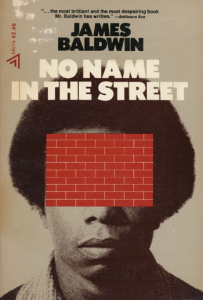This is an insight written by Julia Thomas on the symposium given by Dr. Matthew Hughey and Dr. Paula Ioanide as part of the Bahá’í Chair for World Peace series on Structural Racism.
Trying to Understand the 2016 Elections
Equality and acceptance had always been drilled into me and hearing a candidate for the presidency continuously spout ideas that completely contradict them was disheartening. Even more disheartening was the number of followers he amassed seeming to share the same sentiments.
Which begs the question: as a country that historically cherished its “Melting Pot” status, its ability to unify diverse groups, why does race and class still play such a pivotal role in the decisions surrounding American politics?
“Make America White Again?”
The play on Trump’s well-known credo was Dr. Hughey’s way of cutting straight to the core of the issue in question. An idea of white supremacy; something I thought had been long eradicated due to the diversity of the culture I had grown up in, the many benefits people of color have provided and are providing for the continued betterment of American society.
Yet, this rise in white supremacist viewpoints that has been noted in the 2016 election is not new, but reflects a pattern that has been repeated throughout history. As Dr. Hughey went over examples, the pattern became noticeably clearer. I had to wonder: why do some white people continue to hold onto and foster these archaic beliefs of one color to rule them all?
In answer to this question, Dr. Hughey broke racial reasoning down into 4 parts: nonwhite dysfunction, whiteness patriotism, white paternalism and white victimhood.
The Breakdown of Racial Reasoning-Nonwhite Dysfunction
The first part, nonwhite dysfunction, refers to how outright discussions of race are gradually becoming quieter. Instead of curses hurled around on the open streets, the stigmas have become replaced with racialized topics, topics that have been woven into fundamental ideas in attempts to unite whites behind certain candidates.
I scoffed at this when I first heard it, more so because I didn’t want to think how those ideas could possibly exist in my own mind, than me not actually believing it, but this talk stayed with me. It’s scary to think that some of the ideas you hold convey an idea of racism without you even knowing it. It’s scarier still to think that, try as you might, the identification and eradication of these ideals may be in vain, as they are now so engrained into society.
Whiteness as Authentic Americanness
The second and third parts of Dr. Hughey’s description of racial reasoning involve white patriotism and white paternalism. Combined, these notions provide white supremacists with a way of depicting whiteness as authentically American, allowing them to further ostracize people of color from their definition of what an American citizen is.
Believing that people with those ideals exist wasn’t hard for me. I know people who proudly admit to believing such things. The questions surrounding President Obama’s birth certificate you heard in the news? I didn’t make the connection until after hearing this talk, that’s “birtherism”: an aspect of the notions of white patriotism and paternalism. I rolled my eyes at the story back then, but now I wish I and everyone else had taken it a little bit more seriously.
Whites: Victims or Vagabonds?
Racial reasoning has a final aspect, white victimhood. Masters to the slaves, upper class to the lower class, or a more familiar one for the 21st century, citizens to the immigrants. These comparisons have existed for decades and have been upheld for decades.
Silly me to have believed that after years of struggling towards some semblance of racial equality, it would’ve been totally accepted. The journey towards equality and the dissolution of prejudice threatens concepts that have established the dominant position of white people throughout history, prompting feelings of resentment towards other races as they steadily gain success.
For the first time in this talk, I saw a different side to the argument. As the case of Abigail Fisher was discussed, I feel ashamed to admit it, but thoughts and examples of cases where people of color openly attacked whites for being white, immediately came to the fore, as if my mind had to defend itself for being white.
Why did I feel ashamed?
Was this hypocritical? Yes, very much so.
Unfounded? A little harder to answer.
I grew up in an area with distinctly more diversity than others and know firsthand that for every person willing to beat another just because they are a different color, there is another one, a best friend or a partner, willing to stand and protect against such threats till the very end.
Finally, being able to label ideas is usually a relief to me. Letting me stick them into the right area in my brain, but in this case, the subject matter under discussion was far too important to just label, box and shove off into a corner. Dr. Hughey explored the reasoning behind the prominence of race in the election. But what cost does this behavior pose for those who continue to uphold racial and class prejudices?
“Price of the White Ticket”

Following on from Dr. Hughey, Dr. Ioanide focused on what James Baldwin calls the “price of the white ticket.” Systematic racism results in a dehumanization of others, viewing them as property to be used instead of as human beings. This leads to a dehumanization of yourself, to the spiritual and social degradation of one’s character.
I wasn’t too surprised by the information Dr. Ioanide presented. To me, it connected to research I had heard about pain medication. Rely on it too heavily and you lose your ability to empathize with others’ pain, you lose a bit of your humanity. The cost in this case is your ability to feel for others, to know what loved ones are going through and to know how to comfort them. That already seemed like such a loss that I frankly didn’t want to think about the cost of the large-scale, long-existing terror that is systematic reasoning. But Pottermore put me into Gryffindor so I carried on.
In order to compensate for this internal degradation, a scapegoat is identified to receive the blame and the resulting abuse. In the case of systematic racism, that scapegoat is people of color. Whites use people of color as scapegoats for their own failures and to try and preserve this sense of entitlement that has accumulated over decades of oppression of others. Instead of looking inwards for mistakes, the blame is projected outwards, onto others who have been rising up in society and results in an overall loss of connection, community and culture.
Disadvantages of Degradation
The research and statistics Dr. Ioanide used to corroborate her claims fit and explain issues I’ve seen and been unable to explain; as she showed that white, middle-aged men have the highest reported amount of suicides in the U.S. and demonstrated that there were increased incidences of interracial violence, as well as white-on-white mass shootings and intra-racial violence among families. The spiritual and social degradation that she spoke about appeared through the research she chose to share.
What Can We Do?
Four years may seem like a lifetime, especially now as families are already being torn apart, as Congress reaches a too-familiar halt. The thing to remember is to not give up hope for a better world. Even the smallest actions can make a difference. Don’t let the seeming hopelessness of a situation stop the conversations that need to happen to promote equality and acceptance of all.
The amount of melanin in a person’s skin, a completely uncontrollable biological response, should in no way be a determinant of a person’s worth. America was created on the idea that life, liberty and the pursuit of happiness should be available to every being. I stand by that and I know others do as well. Together, we can create a society that we can be proud of.
“Our lives begin to end the day we become silent about things that matter.”
Martin Luther King Jr.
About the Author
 Julia Thomas is an undergraduate at the University of Maryland. She is studying Psychology with a minor in Law and Society. She is interested in forensic psychology, psychopathology and neurobiology and hopes to continue her education, but doesn’t really know where just yet.
Julia Thomas is an undergraduate at the University of Maryland. She is studying Psychology with a minor in Law and Society. She is interested in forensic psychology, psychopathology and neurobiology and hopes to continue her education, but doesn’t really know where just yet.
Photo Credit: Lori Evelyn Allan
